Can we see burnout online?
Burnout is an, ahem, hot topic on social media:
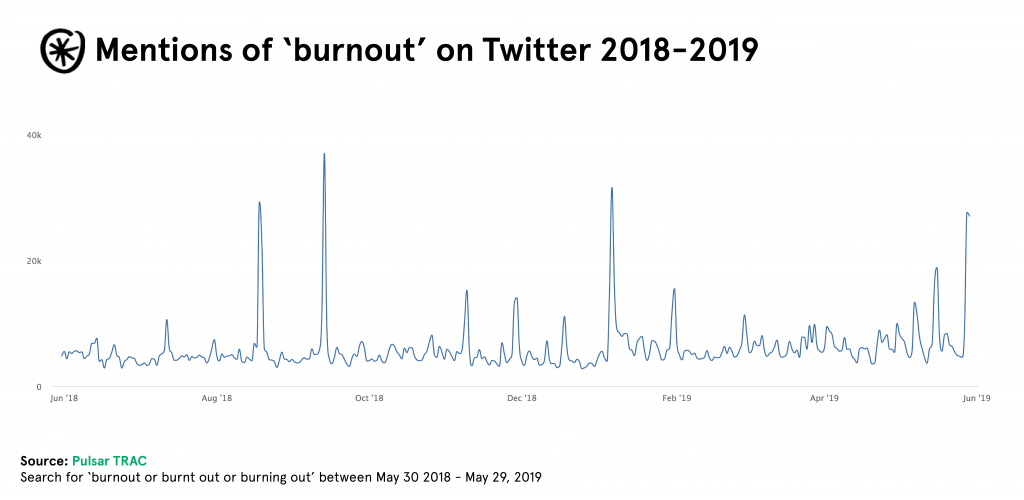
Over the past year, discussion of burnout has risen from an average baseline of around 4k mentions a day in the second half of 2018, to around 6k in 2019.
The spikes in the graph above correlate with viral articles about how burnout is spreading: among millennials, among YouTubers, and, most recently, how it has been recognized by the World Health Organization as a diagnosable medical condition.
These spikes are all conversations about burnout. We wanted to see what people say about actually feeling, or being, burnt out.
Our first port of call, given that most burnout is work-related, was LinkedIn. The network published the results of a user survey on stress at work in April.
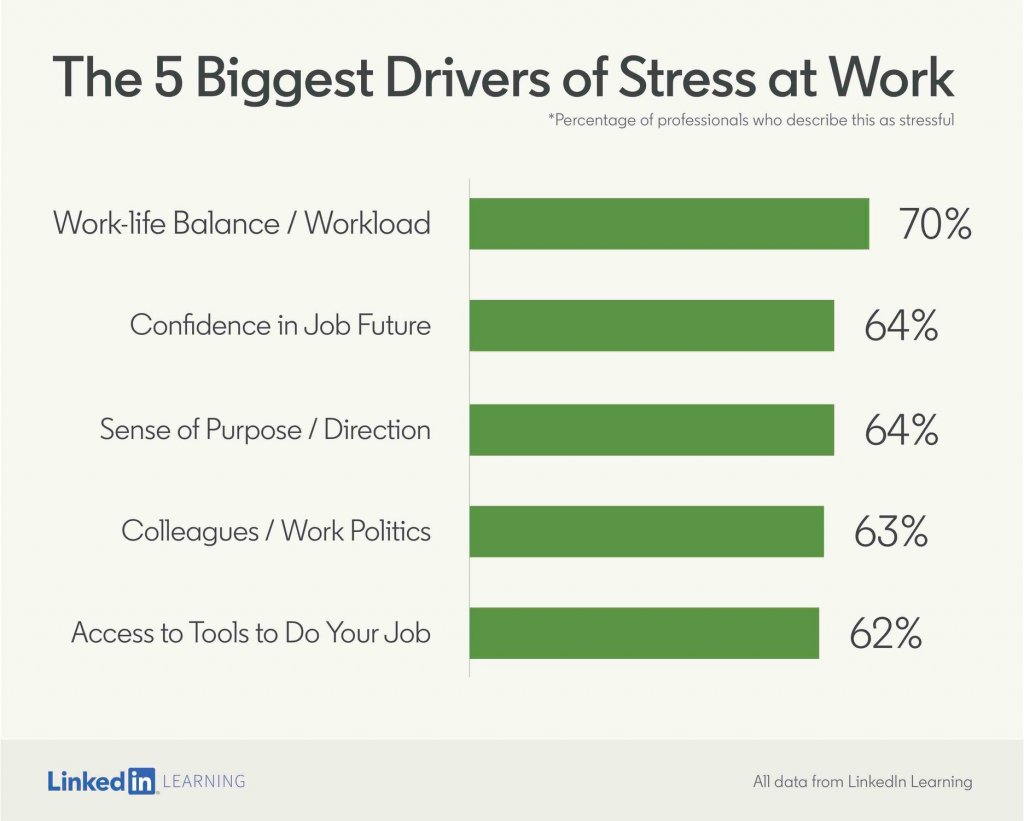
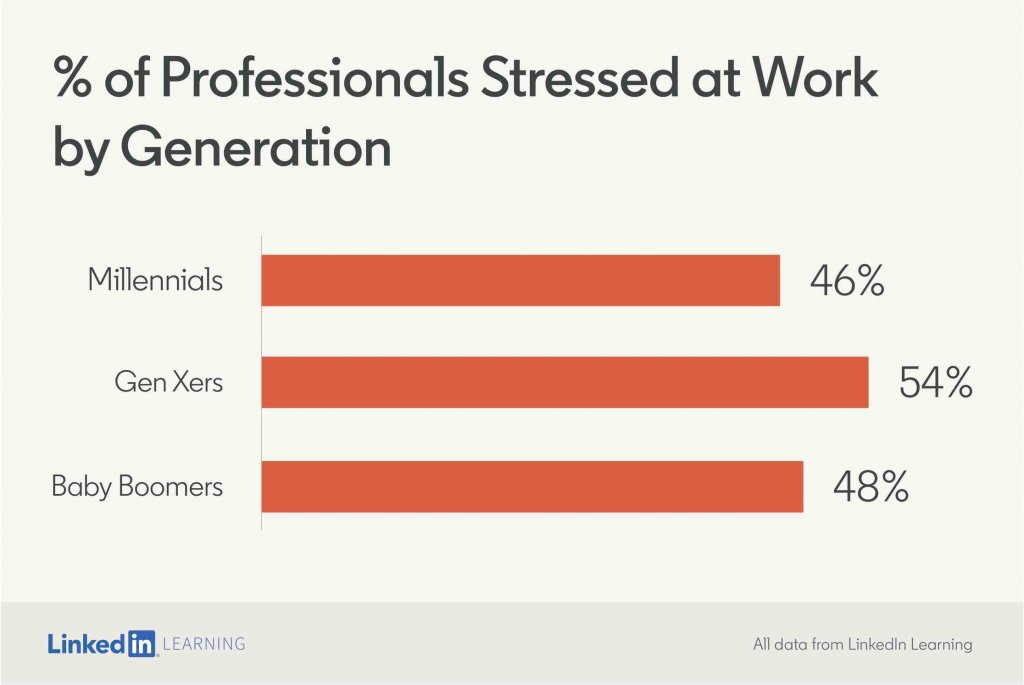
But can we actually see stress and burnout on social media? Do people spontaneously talk about it - or do they need to be asked for it? Does what people say on social media reflect this survey?
It does.
https://twitter.com/TheKat_Iam/status/1133728764310036481
https://twitter.com/nicole_nsg92/status/1129119472885862406
Searching for tweets about jobs including with phrases like ‘stressed’ and ‘can’t cope’, we saw a baseline of 4k tweets a day - similar to the burnout conversation - but this time self-reported, although also with spikes around viral articles:
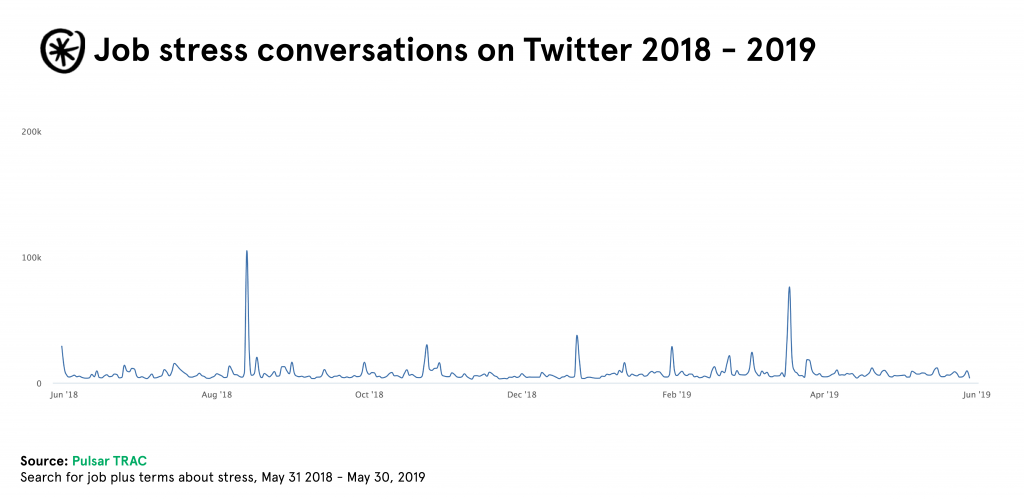
Diving deeper into posts mentioning from the past week, we found that bad bosses and bad team members - the fourth biggest drivers in the LinkedIn survey - were high in discussions of job stress and burnout.
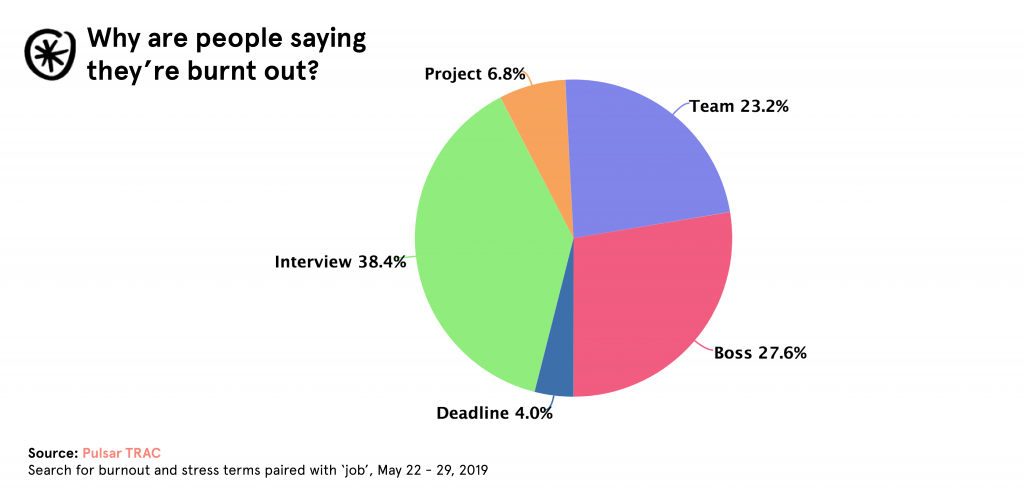
Stress and burnout was reported by nearly equal measures of men and women, just 0.5% more of posters were male.
Only 20% of these posts were links to advice and reports about dealing with stress and burnout, but these sorts of pieces also prompt people to share their own stories:
https://twitter.com/Bnuldun/status/1133464412726202374?s=20
And 75% of posts we saw were text-only: people seem to mainly use social media to vent about their burnout.


